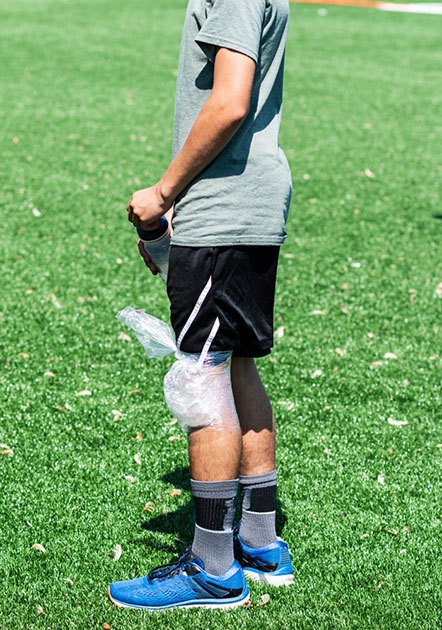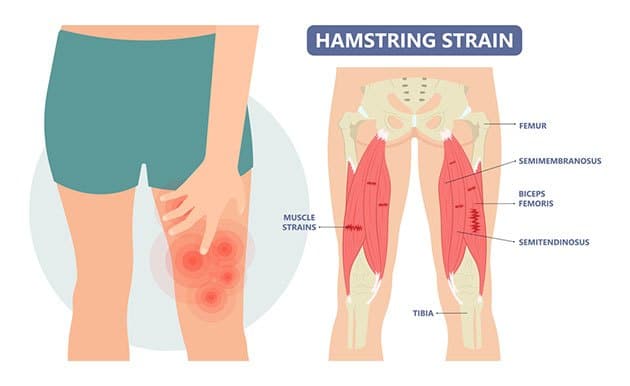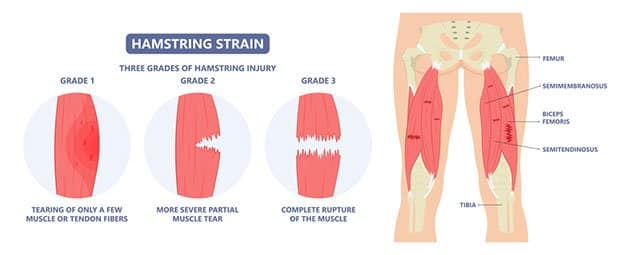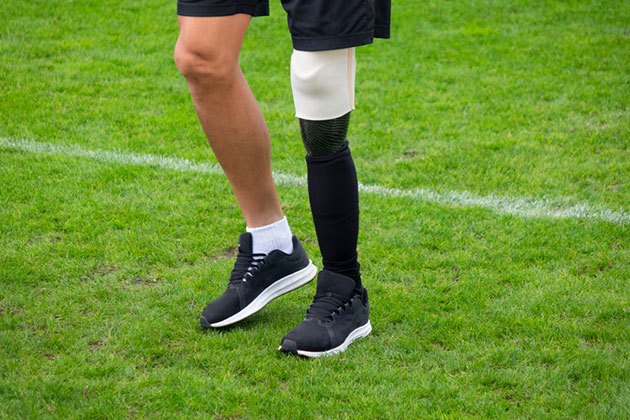Are you a lacrosse player or coach searching for the most comprehensive guide to preventing common lacrosse injuries? In this post, we break down everything you need to know about protecting yourself from injury and keeping your performance at its peak.
With detailed analysis from professional athletes on their experience with lacrosse-related injuries, we provide you with an up-to-date and reliable guide—all in the name of helping keep those aches and pains away!
More...
Take Away Key Points:
Common Lacrosse Injuries: Do Not Be Discouraged!
Sports injuries are inevitable in every game, so it's not odd that the same rule applies in lacrosse. So, if you want to give in advance, it would help if you read the consultant below.
It offers prevention tips and treatment and explains the minor and major injuries on the lacrosse field. Let's start.

Is lacrosse a contact sport? Girls vs. boys lacrosse
Boys lacrosse is a full-contact sport, especially box lacrosse in a confined playing area. The sport allows body contact, such as body-checking and stick-checking, between the opponents. For this reason, playing lacrosse demands specific protective equipment and following the rules to prevent major injuries. The protective equipment for the boys' game includes the following:
On the other hand, girls' lacrosse is a no-body-contact sport. Female lacrosse players are not allowed body checking and stick checking. However, stick checking is allowed only when the female lacrosse players direct the equipment away from the opponent's body and head. Girls' games also require protective equipment, such as:
Is lacrosse a dangerous sport?

Lacrosse is a moderate-risk sport. The majority of common injuries include sprains, strains, and bruises. However, more significant injuries can still appear since lacrosse players use maximum strength when playing.
In addition, the sport requires full contact between the lacrosse players, so injuries often occur. However, the injuries are not as severe as in other more dramatic sports, such as boxing, kickboxing, motocross, and gymnastics, yet lacrosse still might cause injuries.
What body part is injured the most?
The most injured body parts include hip, leg, and ankle injuries. Below you can find other common lacrosse injuries, their treatment, and prevention.
Who treats lacrosse injuries?
The UR (University of Rochester) sports medicine is one of the Stop Sports Injury Campaign participants. The STOP (Sports Trauma and Overuse Prevention) campaign was initiated and governed by the American Orthopaedic Society for Sports Medicine (AOSSM).
The main objective of the STOP campaign is to help kids train in their favorite sports without injuries. Even when choosing the sports with the highest risk of overuse and trauma injuries. Boys and girls lacrosse is also among the high-risk sports.
The campaign teaches girls and boys how to avoid lacrosse injuries, the proper treatment of sport-related injuries, and tips to stay fit even if they are injured.
In addition, all lacrosse organizations need well-organized injury prevention/education programs & emergency medical plans for their teams and tournaments.
What Are the Most Common Lacrosse Injuries?

As previously mentioned, lacrosse is a moderate-risk sport with minor injuries, yet major injuries still can occur. Trauma injuries and overuse injuries are not excluded. So, lacrosse players - both boys and girls must be disciplined and follow the set standards to stay healthy.
Here are some of the most commonly reported injuries treated during the lacrosse season:
1. Non-contact knee and ankle sprains
These injuries sustained while dodging and cutting are common in both girls' and boys' lacrosse. At the scholar level, girls reported injuries are 21%, while boys' lacrosse includes 16%.
2. Knee injuries
Knee injuries include anterior cruciate ligament (ACL) tears. These injuries are the primary sports-related injuries, causing boys and girls to miss the proper training sessions and games.
3. Head and face injuries
Head and face injuries include a concussion and are less frequent, yet they are still present in the game. These injuries are mainly related to body-to-body or body-to-ground contact in the boy's game or inadvertent ball or stick contact in the girl's game. The injuries often occur during the match and not during practice sessions.
4. Muscle strains
These injuries relate to the groin, quadriceps, and hamstrings and are similar to the non-contact mechanisms.
5. Abrasions
Abrasions related to the uncovered lower extremities are also frequent in sports. These injuries also require suitable protection and proper treatment.
6. Foot blisters & shin splints
Shin splints & foot blisters are the consequence of changing field surfaces and continuous running.
7. Hand and wrist fractures
These injuries are possible when players make direct contact by checking with the sticks or running into each other. Girls' lacrosse offers a higher rate of these injuries, as the game requires fewer paddings than boys' lacrosse.
8. Commotio cordis (less likely, but still present)
Although the injury is more present in hockey or baseball, the commotio cordis is a very rare cardiac arrhythmia caused by ball-to-chest contact. Few cases were known in male lacrosse. The utilization of on-field AEDs and the early activation of the EMS system prevents these kinds of injuries on the field.
How Are Lacrosse Injuries Treated?
If injuries occur, it's best to stop the game until a qualified health professional or a team physician assesses the condition of the hurt player(s). For minor injuries, the most frequent treatment includes rest, elevation, and ice.
However, there are more significant injuries requiring more prolonged rehabilitation and rest. After that, the athletes might be allowed to return, but the physicians must estimate if there's a chance of re-injury.
The players might also undergo surgeries, so physicians must estimate all head injuries correctly. Players might return to games only after a correct physical evaluation when they are symptom-free and on a graduated schedule.
Valuable tips to prevent injuries

Here are some of the best tips and tricks to prevent lacrosse injuries:
FAQs
Can a lacrosse stick break a bone?
Yes, a lacrosse stick can break a bone (cause hand or wrist fractures.
Can a lacrosse ball break a bone?
Yes, a lacrosse ball can break a bone due to its speed, distance, and weight.
How many injuries in lacrosse per year?
There are 6.3 injuries per 1000 AEs for boys and girls combined. Boys had 22 injuries (8.7 per 1000 AEs), while girls had 7 injuries (3.4 per 1000 AEs). You can find more information here.
Final words
As you can see, lacrosse requires various steps as a precaution to prevent minor or major injuries. Players must follow the rules and wear helmets and other protective gear to avoid pain and discomfort.
In addition, they shouldn't use deliberate unfair tactics to hurt opponents or other members.

Freddy is the heart and soul of Lacrosse Runner. As a former athlete, Freddy is very passionate about Lacrosse. He keeps up with the sport’s changes and innovations and often tests the new equipment released by the leading manufacturers. Read more here
